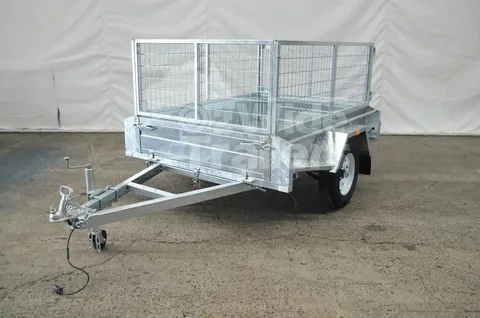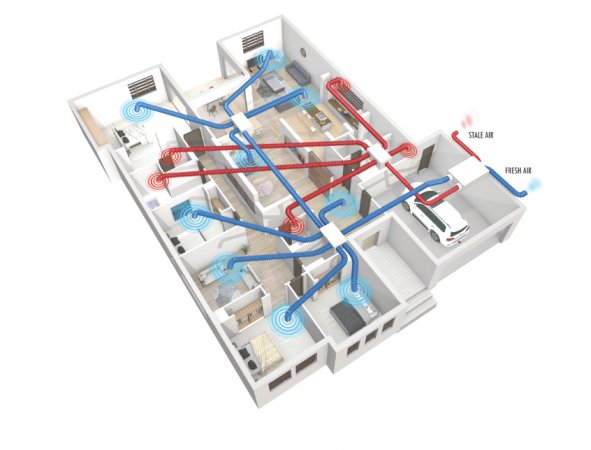Industrial kitchen equipment forms the backbone of any commercial kitchen, providing the necessary tools to efficiently prepare, cook, and store food. This category encompasses a wide range of appliances, from ovens and stoves to refrigerators and dishwashers, each designed to meet the high demands of food service operations. Selecting the right equipment is vital for ensuring smooth kitchen workflows, maintaining food quality, and adhering to health and safety regulations. Additionally, investing in durable and energy-efficient equipment can significantly reduce operational costs. Chefs and kitchen staff rely heavily on these appliances to deliver consistent results during busy service periods.
Key Considerations When Choosing Kitchen Appliances
When selecting kitchen appliances, it is essential to consider the kitchen’s specific needs, such as the type of cuisine being prepared and the volume of food production. The kitchen’s size and layout are critical factors, as they dictate the dimensions and arrangement of the equipment. It’s important to choose appliances that fit the available space and facilitate an efficient workflow.
Energy efficiency is another significant consideration. Opting for appliances with high energy ratings can reduce operational costs and contribute to sustainability goals. Reliability and durability are also key; investing in well-constructed appliances made from high-quality materials can prevent frequent breakdowns and costly repairs.
Additionally, considering the ease of maintenance and service support availability can save time and resources in the long run. Lastly, it’s important to evaluate the technological features offered by the appliances, such as digital controls and programmable settings, which can enhance precision and efficiency in the kitchen. By carefully weighing these considerations, kitchen operators can select appliances that meet their specific operational needs and support a high-performance kitchen environment.
Essential Features of High-Quality Kitchen Equipment
Durability and functionality are crucial factors when choosing high-quality kitchen equipment, and they significantly impact a kitchen’s efficiency. Here are five key features to look for when selecting the right equipment.
Durability and Robust Materials
Appliances made from durable materials like stainless steel are ideal for high-demand kitchen environments. These materials resist wear and tear, ensuring long-lasting performance even with continuous use.
Advanced Functionalities
Modern kitchen equipment often includes advanced functionalities such as programmable settings and user-friendly interfaces. These features streamline kitchen operations, allowing staff to focus on creativity and productivity.
Energy Efficiency
Energy-efficient appliances are not only cost-effective, but they also contribute to sustainability. Choosing equipment with high energy ratings helps businesses lower operational costs while reducing their environmental impact.
Safety Features
Ensuring a safe working environment is essential in the kitchen. High-quality equipment typically includes safety features such as automatic shut-off mechanisms and precise temperature controls, which prevent accidents and enhance operational safety.
Ease of Maintenance
High-quality kitchen equipment offers significant advantages in cleaning and maintenance. Appliances that are easy to maintain help reduce downtime and prevent costly repairs, extending the equipment’s overall lifespan.
Latest Innovations in Kitchen Equipment
Technological advancements have significantly impacted kitchen equipment, introducing features that enhance efficiency and precision. Modern cooking appliances have rapid heating, allowing quicker preparation times without compromising food quality. Precise temperature control mechanisms ensure consistent cooking results, which is vital for maintaining high culinary standards.
Energy-saving modes are another innovative feature that reduces operational costs and contributes to environmental sustainability. The integration of smart technology has revolutionised the industry; smart kitchen appliances enable remote monitoring and control through mobile devices, offering greater flexibility in managing kitchen operations. This connectivity allows for real-time adjustments and monitoring, enhancing the overall efficiency of the kitchen.
Additionally, innovations in materials and construction techniques have led to more durable and long-lasting equipment. High-tech coatings and non-stick surfaces make cleaning and maintenance easier, further extending the lifespan of the appliances. Modular designs allow easy customisation and upgrades, ensuring the equipment can adapt to evolving needs. These advancements collectively contribute to a more streamlined, efficient, and adaptable kitchen environment that meets the rigorous demands of commercial food service.
Space-Saving and Ergonomic Designs
Space-saving designs are indispensable in modern industrial kitchens, particularly where square footage is premium. The strategic implementation of compact, multi-functional, and stackable appliances allows maximum utilisation of the available area without sacrificing essential functionality. This intelligent approach to kitchen layout fosters a more organised and efficient workspace, enabling culinary staff to navigate and execute their tasks with greater ease and without physical impediments. Clear pathways and well-defined zones contribute significantly to a smoother workflow, especially during peak operational hours.
Complementing space optimisation, ergonomic considerations play a pivotal role in enhancing both safety and productivity within the demanding environment of an industrial kitchen. Equipment designed with the user’s physical well-being in mind can substantially mitigate the risk of workplace injuries and boost overall efficiency.
Features such as adjustable heights for work surfaces and equipment, easily accessible controls, and intuitive interfaces contribute to a more comfortable and less physically taxing work environment. Furthermore, incorporating mobile or modular equipment provides the flexibility to adapt the kitchen layout to evolving needs and workflows, ensuring sustained efficiency and optimal performance by thoughtfully integrating space-saving solutions with ergonomic principles; industrial kitchens can cultivate a streamlined and highly productive culinary operation, ultimately maximising both the staff’s well-being and the kitchen’s overall output.
Digital Controls and Automation Options
Digital controls and automation are transforming industrial kitchen operations by offering unparalleled precision and ease of use. With digital interfaces, kitchen staff can programme and monitor appliances effortlessly, ensuring consistency in cooking and preparation. These advanced systems enable precise temperature and timing adjustments, which are crucial for achieving optimal culinary results.
Automation options further streamline workflows by reducing the need for manual intervention, thereby saving time and reducing the likelihood of human error. Automated features such as timers, preset cooking programmes, and remote monitoring capabilities allow greater control and flexibility. This technology can adapt to various cooking methods and requirements, making it suitable for diverse culinary environments.
Additionally, digital controls often come with user-friendly touchscreens and intuitive interfaces, making them accessible even to those with minimal technical expertise. These interfaces frequently offer multilingual support, catering to diverse kitchen teams. The integration of automation and digital controls not only enhances operational efficiency but also supports consistency in food quality.
Kitchen staff can focus on more creative aspects of food preparation, knowing that the equipment handles routine tasks reliably. Advanced diagnostics and self-maintenance alerts are also common features, helping to identify and address potential issues before they escalate, thus ensuring continuous operation. This seamless blend of technology and practicality represents a significant leap forward in the evolution of kitchen equipment.
Compliance with Industry Standards and Regulations
Adherence to industry standards and regulations is crucial for maintaining a safe and efficient kitchen environment. Kitchen equipment must comply with stringent safety protocols to prevent accidents and ensure staff well-being. Hygiene standards are equally important; equipment must be designed to minimise contamination risks and facilitate thorough cleaning. Environmental regulations also play a significant role, requiring appliances to meet specific energy efficiency and emissions criteria. By selecting equipment that meets these standards, businesses can ensure they operate within legal requirements and promote a sustainable kitchen environment. Regular audits and inspections can help verify that all appliances continue to meet the necessary criteria.
Additionally, keeping up-to-date with changing regulations and emerging standards is essential for ongoing compliance and operational excellence. Staff training programmes on regulatory compliance can further support these efforts, ensuring everyone knows and adheres to the required practices. Choosing reputable manufacturers known for their commitment to quality and compliance can provide added assurance that the equipment will meet all necessary standards.
Versatility and Multi-Functionality
Versatile and multi-functional kitchen equipment plays a crucial role in enhancing the flexibility and efficiency of commercial kitchens. Appliances that can handle multiple tasks, such as combination ovens that offer baking, steaming, and grilling options, help reduce the need for additional units, thereby saving valuable kitchen space. Such equipment allows for a seamless transition between different cooking methods, especially in kitchens with diverse and frequently changing menus. Multi-functional appliances simplify kitchen operations and contribute to cost savings by reducing the investment needed in multiple pieces of equipment. Additionally, they support a more streamlined workflow by minimising the movement required to switch between tasks.
This integration of functions into single units ensures that kitchen staff can operate more effectively, focusing on maintaining high culinary standards without being hindered by the limitations of single-purpose equipment. Moreover, multi-functional appliances are often designed with user-friendly interfaces and programmable settings, further enhancing operational efficiency. By prioritising versatility and multi-functionality, commercial kitchens can adapt to varying demands while maximising both space and resources, ultimately leading to a more productive and dynamic kitchen environment.
This adaptability is particularly beneficial during peak service times when efficiency is paramount. By swiftly pivoting between different culinary techniques, kitchen teams can maintain consistency in quality while meeting their clientele’s high expectations.
Maintenance and Care of Industrial Kitchen Appliances
Routine maintenance ensures industrial kitchen appliances operate at their peak performance. Following a consistent cleaning schedule is essential, as well as paying particular attention to areas prone to grease and residue build-up, which affect appliance efficiency. Inspections should be carried out regularly to identify wear and tear, ensuring timely intervention before minor issues escalate into major problems.
Adhering to the manufacturer’s guidelines for usage and maintenance will help preserve the integrity of the equipment. Staff training on proper use and care procedures is also vital to minimise the risk of damage and maintain optimal functionality. Access to replacement parts and professional servicing can further enhance the longevity of the appliances.
Conclusion
In the dynamic realm of commercial food service, the selection of industrial kitchen equipment transcends mere procurement; it represents a strategic investment in operational efficiency, safety, and culinary excellence. By prioritising durability, advanced functionalities, energy efficiency, safety features, and ease of maintenance, establishments can forge a robust foundation for success. Furthermore, embracing innovations, space-saving designs, digital controls, and adherence to industry standards ensures adaptability and long-term sustainability. Ultimately, the thoughtful integration of versatile and multi-functional appliances empowers kitchens to navigate the demands of a bustling environment while consistently delivering exceptional culinary experiences.
FAQs
Why is durability a key feature in industrial kitchen equipment?
Often achieved through robust materials like stainless steel, Durability ensures that Industrial Kitchen Equipment can withstand the rigours of a high-demand commercial kitchen environment, leading to longevity and reduced replacement costs.
How do advanced functionalities benefit kitchen operations?
Features like programmable settings and user-friendly interfaces streamline workflows, allowing kitchen staff to operate more efficiently and focus on complex culinary tasks, ultimately enhancing productivity.
What are the advantages of choosing energy-efficient appliances?
Energy-efficient equipment lowers operational costs by reducing energy consumption and contributes to environmental sustainability. It aligns with green business practices and potentially offers long-term savings.
Why are safety features important in kitchen equipment?
Safety features such as automatic shut-off mechanisms and precise temperature controls are crucial for preventing accidents, ensuring a safe working environment for kitchen staff, and complying with safety regulations.
How does the ease of maintenance contribute to the value of kitchen equipment?
Equipment that is easy to clean and maintain reduces downtime for repairs and cleaning, prolongs the lifespan of the appliances, and helps maintain hygiene standards, ultimately saving time and resources.




